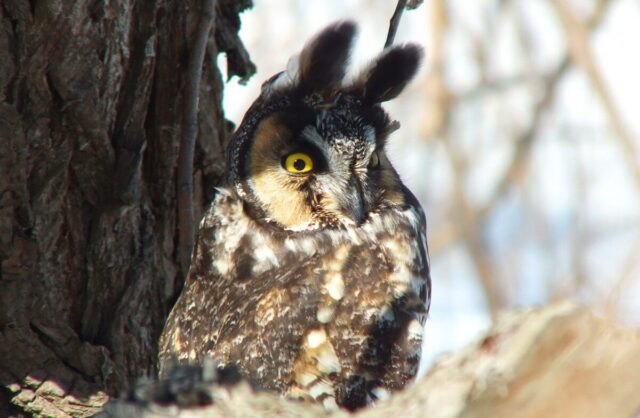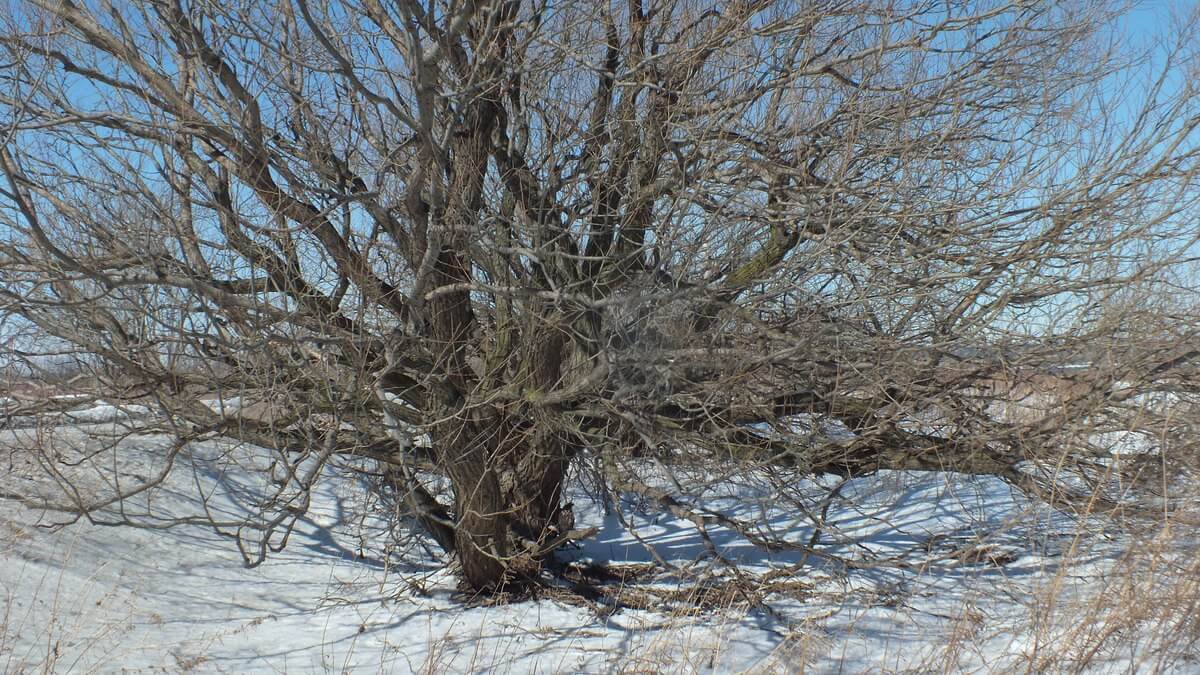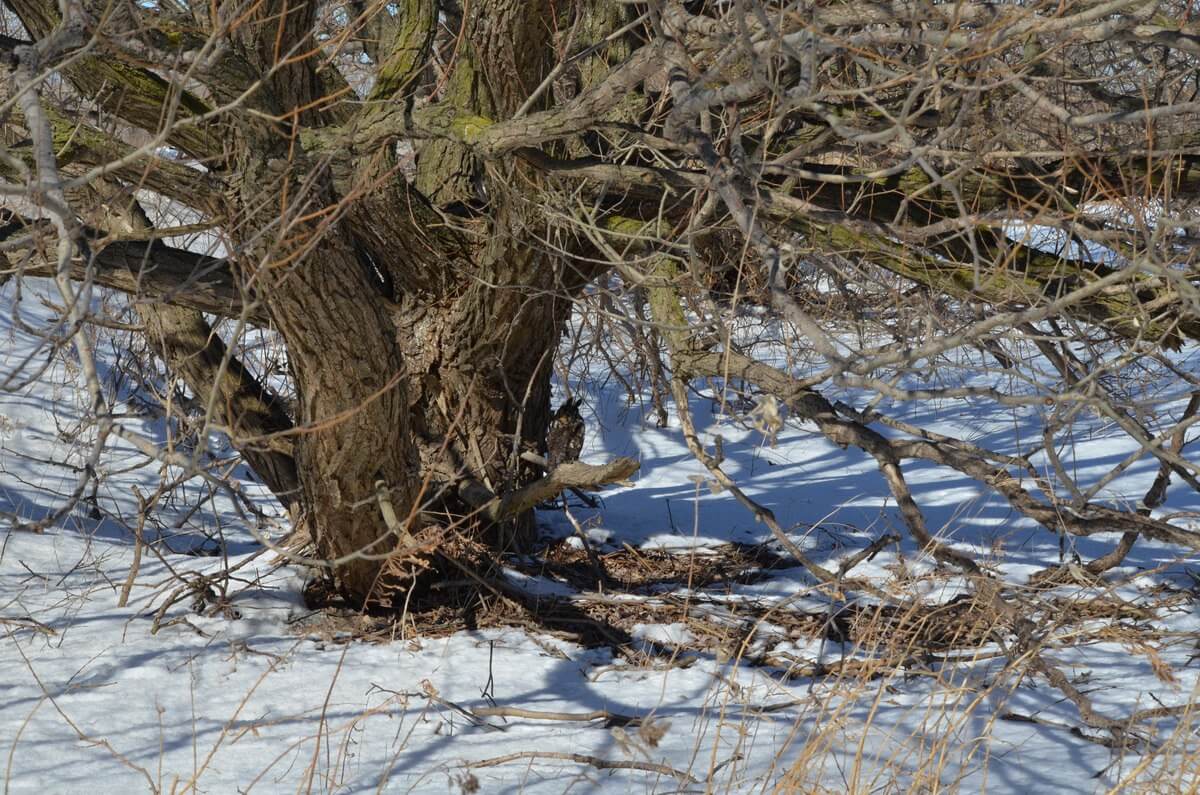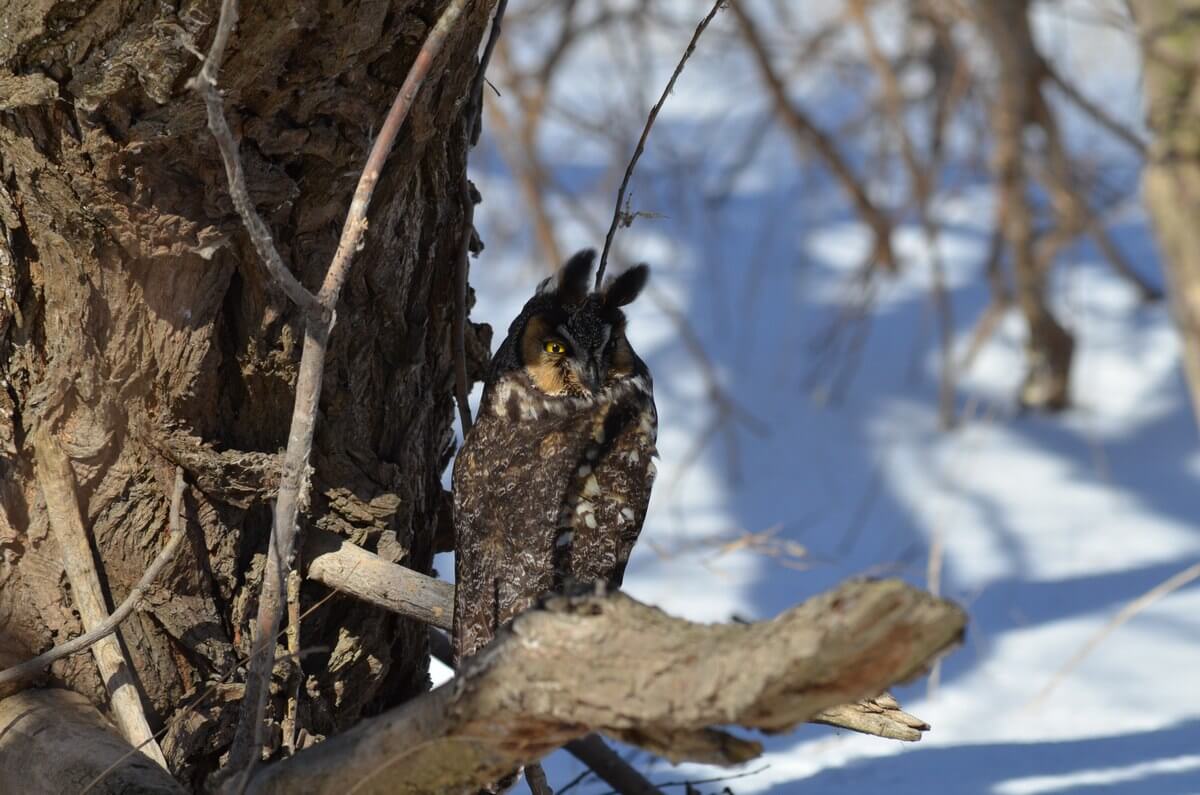Long-eared Owl at Tommy Thompson Park

Owing to family demands this winter, Bob and I have had no opportunity to do birdwatching, much less skiing or hiking. One past Sunday was our first day of liberty, and we seized the moment by going to one of our favorite spots for birdwatching… Tommy Thompson Park in Toronto. We were not disappointed and came up with a lifer, a gorgeous Long-Eared Owl.
Owing to the change to Daylight Savings Time, we arrived at the Tommy Thompson Park a little later than usual, and spent hours walking the trails beneath the bright sunshine even as we were buffeted by strong northerly winds. Rather than stick to Spine Road on the way in, we followed the well-packed trail that skirts the edge of the peninsula overlooking Lake Ontario.
Other than a few scattered ducks on the lake, and a plethora of others near the bridge adjacent to Cell C, we saw next to no birds. We had about given up hope of sighting any new species but were happy with the outing just for the respite from stress and cabin fever.
When we were a good ways back towards the entrance to the Park, we spotted a bike laying haphazardly along Spine Road, and a young lad laying prone in the snow nearby with his camera trained on a tree. This clued us in to the presence of something good, and when he climbed back up the snowbank onto the pavement, I hurriedly inquired as to what he was onto.
The keen photographer was eager to share his discovery…a Long-eared Owl perched near the very base of a tree. Believe it or not, the owl had been sitting there most of the day, and we had walked right by it earlier in the morning without noticing its presence despite scanning the bushes and branches as we trudged through the soft snow.
Following the young man’s tracks through the deep snow, we made a wide circle and approached the tree to a safe distance for an unobstructed view of the well-camouflaged owl. Where it sat tucked against the trunk afforded an excellent windbreak for the owl against the very strong gusts of north wind coursing over the low land mass.
Long-eared Owls are easily recognized by the long feathers or tufts that resemble ears. Sitting fairly closely spaced on top of the head, the prominent tufts give these owls an almost surprised look because they stand erect. Given the blustery conditions, as we looked on, the tawny-edged tufts constantly bent to the wind.
Long-eared Owls are medium-sized owls with slender bodies. As with some other owl species, these owls will elongate their bodies when roosting in an attempt to resemble a tree branch. A Long-eared Owl has dark plumage with an intricate pattern of black, brown and buff on the feathers. A female’s plumage will be even darker than that of a male.
A Long-eared Owl has a distinguishing facial disk that can range in colour from buff to rufous to orange, and conspicuous against this rounded facial disk are two vertical white streaks that almost look like an “X” between the bright yellow eyes.
As Bob and I observed this Long-eared Owl, it kept an eye on the small cluster of photographers and passersby that were keen to learn about the “big, beautiful bird”. To prevent its eyes from becoming dried out by the wind, and yet to allow constant visibility, the nictitating membranes were repeatedly drawn across the eyes. These translucent membranes are referred to as third eyelids.
Together with the fact that Long-eared Owls maintain a ramrod-straight posture when perched, the antenna-like ear tufts make these owls appear larger which goes a long ways towards warding off larger owls.
As Bob and I savoured the moment there with the Long-eared Owl, we spoke to one interested woman who told us an unusual story. That very morning, she was wakened in her home when an Eastern Screech Owl somehow emerged in her living space via access through her chimney. Uncertain as to how to deal with the intruder, she managed to corral it carefully with a cardboard box. Using a towel to protect the little owl, she cautiously removed it to the outdoors and rejoiced when it flew away. And here she was, hours later, taking in the second owl that she had ever seen.
Long-eared Owls inhabit woodlands preferring forest edges that allow access to open areas like grassland, wetlands and farmland where foraging is at its best. Open coniferous and deciduous forests and wooded ravines and gullies also make good habitats for these owls because they can fly below the canopy in search of voles, deer mice and rabbits. Gophers and rats are also taken by these sleuths that can fly silently at night and pick off prey in absolute darkness simply by using their acute hearing.
In winter, Long-eared Owls migrate south from the northern regions of their temperate range where they often will roost together in clutches of 7 or more owls. Dense groves of conifers and brushy thickets make good places to perch during the day, but February is the start of their breeding season, so often more opportunities present themselves to observe these secretive and rarely-seen owls as they disperse and seek an appropriate habitat with dense tall trees or shrubs for nesting.
Four and a half hours of walking on the Leslie Street Spit had exhausted Bob and me after a winter of such inactivity, but we were beaming from ear to ear with satisfaction at having seen this Long-eared Owl. I can’t think of a better way to have spent our first day without commitments. It was awesome!
Related:















